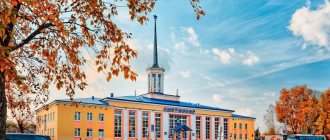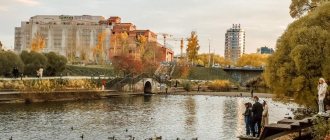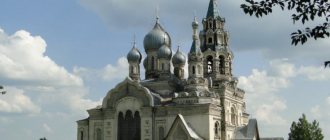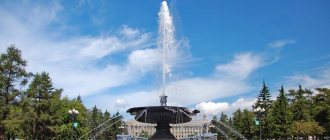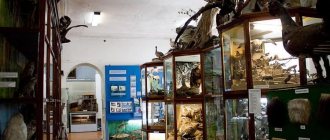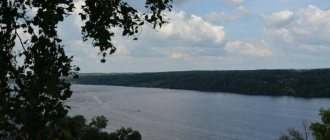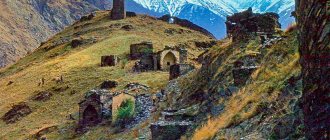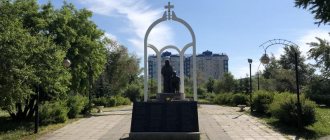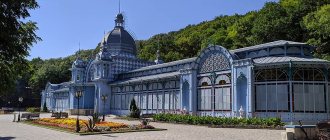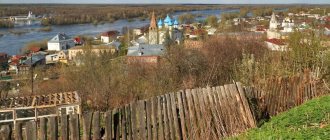The first chronicle mention of the village of Khotchino, which gave rise to modern Gatchina, dates back to 1500. It remained an unremarkable village until 1765, when Catherine the Great granted these lands to the illustrious Count G. Orlov. The empress's favorite, with the help of magnificent architects and the talented architect C. Rinaldi, turned a provincial estate into a luxurious palace and park complex. Later, the estate came into the possession of the future Emperor Paul I, who granted Gatchina the status of a city. From then on, until the October Revolution, the polis was the summer residence of Russian autocrats. After the Second World War, the Institute of Nuclear Physics settled here, and industrial enterprises appeared. Today Gatchina is a large cultural and industrial center of the Leningrad region. In 1999, it was recognized as the most comfortable city in Russia with a population of less than 100 thousand people.
The main attractions of Gatchina
Photos and descriptions of the sights of Gatchina will help travelers see all the most interesting things, even if they happen to be passing through here. First of all, you should visit the places that are considered the calling cards of the city.
Grand Palace
- Opening hours: daily, except Mondays, from 10:00 to 18:00.
- Ticket price: adult 400 rub., student 200 rub.
- Telephone.
- Website: https://gatchinapalace.ru
- Address: Krasnoarmeysky Avenue, 1. Transport stop "Gatchina Palace".
The list of attractions in Gatchina opens with the Grand Palace. The magnificent building was erected at the end of the 18th century. designed by the famous architect A. Rinaldi for Count Grigory Orlov. After the death of Catherine the Great's favorite, the estate was bought by the imperial family. Towers rise above the main building of the palace museum. It is adjacent to the symmetrical squares of the Kitchen and Stables buildings. The architectural ensemble is surrounded by a luxurious park area and magnificent ponds. With its impressive size, the castle, lined with limestone, looks incredibly elegant. During the war, the buildings were seriously damaged. In order for the palace to regain its former splendor, large-scale restoration work was required.
Constable
- Address: Krasnoarmeysky Avenue. Transport stop "Connetable Square".
Many members of the imperial family contributed to the formation of the appearance of the Gatchina palace and park ensemble. In the late autumn of 1793, for example, a 32-meter stone obelisk appeared on the square at the entrance to the residence. The monument, weighing about 640 tons, was erected by order of Paul I. A parapet and pedestals were placed in a special order around the pillar. This is how Gatchina acquired the largest sundial in Europe. Unlike many of the emperor’s dubious undertakings that sunk into oblivion, the Constable managed to outlive its creator, although it was almost destroyed by a direct lightning strike in 1881. After the Second World War, the obelisk, parapet and pedestals that had been damaged by shelling were also restored to their original form. The monument was built from soft limestone, so restoration work on it is carried out at regular intervals.
Palace Park
- Address: Krasnoarmeysky Avenue. Transport stop "Gatchina Palace".
The delightful park area surrounding the former residence of Russian autocrats forms a single composition with the Grand Palace. The luxurious architectural and landscape ensemble is located on an area of more than 143 hectares. Its elements are magnificent alleys, graceful bridges, elegant pavilions, white and Silver lakes, many ponds and streams. From observation platforms located in different places of the English, Dutch, Botanical, and Own Gardens, stunning views of the surrounding splendor open up.
Pavlovsk Cathedral
- Opening hours: daily, from 8:30 to 20:00.
- Telephone.
- Website: https://soborgatchina.cerkov.ru
- Address: st. Sobornaya, 26. Transport stop "Central Market".
Since the middle of the 19th century. The population of Gatchina began to grow rapidly and the city churches could no longer accommodate all the parishioners. Therefore, it was decided to build a spacious cathedral in the name of the Apostle Paul. Construction was completed in 1852 with the consecration of the church. The five-domed pseudo-Russian style temple was almost destroyed during the Soviet era. The building was preserved, but the unique cypress iconostasis was irretrievably lost. The authorities timed a major renovation to coincide with the 125th anniversary of the cathedral. Today the building is in good condition. Pilgrims from all over the country are attracted to the temple by Orthodox shrines - the miraculous image of the Great Martyr Panteleimon and the relics of Mary of Gatchina.
Priory Palace
- Opening hours: Wednesday to Sunday, 11:00 to 19:00
- Ticket price: adult 200 rub., student 100 rub.
- Telephone.
- Website: https://gatchinapalace.ru/dvorec
- Address: st. Chkalova, 22. Transport stop “Leonova Street”.
This landmark also appeared in Gatchina thanks to Paul I. The emperor ordered the construction of a somewhat ascetic castle with a high Gothic tower rising above the surface of the Black Lake in 1799 for a prince from the Condé family. The French Revolution deprived the descendants of the Grand Dukes of most of their possessions. Then the Russian autocrat decided to build a miniature priory on Russian soil for the master of the Order of Malta. For about 10 years the castle served as a haven for the prince and his retinue. Then, under the arches of the structure, there was a Lutheran temple, a general building, a hospital, and a House of Pioneers. The castle attracts attention with its asymmetrical shapes and diversity of architecture. In the exterior of the palace one can discern the features of a fortress, a merchant estate, and a chapel.
Naumachia
Naumachia is a swimming pool in Sylvia Park. At the end of the 18th century, when the main park attractions of Gatchina were being created, a spring was accidentally found at this place. Then the architect decided to create a kind of ancient theater here to present battles on the water. Unlike other stylized buildings that had fallen into disrepair, this pool had the appearance of ruins as intended by its creator.
The last time the pool was renovated was in the mid-19th century. Today it is thickly covered with moss and surrounded by thickets of tall grass.
Miracles of architecture and monuments of Gatchina
Among all the interesting things you should definitely see in Gatchina, several historical and architectural monuments stand out. It’s worth taking memorable photos against the backdrop of these colorful sights.
Monument to Paul I
- Address: Grand Palace Park. Transport stop "Gatchina Palace".
The monument to the emperor, thanks to which Gatchina acquired several main attractions, appeared in the city in the summer of 1851. The grand opening was attended by the heir to the autocrat, Nicholas I, and the entire august family. It is interesting that even during the Soviet era the monument to the Tsar was not demolished. The townspeople have always treated the bronze statue with love. Only one liberty was allowed. In the middle of the last century, graduates of the Higher Naval School dressed the monument to the arrogant ruler in a uniform vest at their graduation.
Pavilions of the palace park
- Address: Palace Park. Transport stop "Gatchina Palace".
The incredibly elegant pavilions are considered the true decoration of the Gatchina Palace Park. Each of them is attractive in its own way. The building on the Island of Love, for example, is named after the delightful Venus. The gray-green wooden building with an antique portico was erected in 1791.
An elegant gazebo with a semicircular dome and colonnade, called the Eagle Pavilion, was built two years later. The walls and the inner surface of the dome of the structure are decorated with warm light yellow tuff. Ten slender columns of the Tuscan order support a semicircular beam from the front entrance. A white marble eagle in a crown once sat on it. In its talons the proud bird held a heraldic shield with the monogram of Paul I.
Chesme Obelisk
- Address: Palace Park. Transport stop "Ulitsa Nesterova".
The oldest monumental landmark of Gatchina is considered to be the obelisk installed on the cape of White Lake in the Palace Park. The monument was erected in 1770 by order of the commander of the Russian Mediterranean squadron, Count Alexei Orlov, to commemorate the Chesme victory over the Turkish fleet. Since then, the pillar has been decorating the former estate of nobles, and its image is the family coat of arms of the Orlovs. The obelisk reflected in the surface of the lake looks very impressive. Elements of the monument are carved from marble of different tones - from light pink to dark gray.
Submarine S. Dzhevetsky
- Address: Cuirassier Boulevard. Transport stop "Baltiysky Station".
Today, few people know that the presentation of the first serial Russian submarine to royalty took place in Gatchina. In the summer of 1881, Emperor Alexander III watched on Lake Serebryanoye the testing of a submarine built according to the design of Stepan Dzhevetsky. The test dives were then led by the creator of the deep ship. The submarine surfaced not far from the boat with the king and queen. Dzhevetsky, who rose from the hatch, presented a bouquet to Empress Maria Feodorovna. Soon after this event, the deep-sea ship was adopted by the Russian army. 125 years later, the monument was solemnly opened in the city. Since 2006, an exact copy of Dzhevetsky’s submarine has been one of the iconic sights of Gatchina.
Venus Pavilion
Ticket price: 80 rubles, schoolchildren, students, people over 65 years old - 40 rubles.
The Venus Pavilion is located in the palace park, on the Island of Love. The construction dates back to the end of the 18th century.
The walls inside are decorated with beautiful panels depicting mythical creatures. Particularly interesting is the “Triumph of Venus” lampshade, which depicts the goddess driving a chariot drawn by swans. Anyone can enter the pavilion, but you will have to pay for entry.
Gatchina museums
Curious tourists will find where to go in Gatchina to fill their leisure time with impressions. The doors of local museums are always open to city guests.
City Museum
Opening hours: daily, except Tuesdays, from 10:00 to 18:00.
- Ticket price: 30 rubles for everyone.
- Telephone.
- Website: https://www.migtn.ru
- Address: 25 October Avenue, 18. Transport stop "Kirkha".
Despite the fact that the institution dates its history only from 2004, its exhibitions arouse great interest among city guests. Traveling through the exhibition halls, tourists will be able to learn a lot of interesting things about the past and present of Gatchina. Separate sections are devoted to the pre-Petrine era, the imperial and Soviet periods, and modern times. Among the exhibits are ancient household items, tools, samples of bladed weapons and armor. For those interested, the staff of the institution conduct walking tours of the memorable places of Gatchina.
Estate-Museum of P. Shcherbov
- Opening hours: daily, from 10:00 to 17:00.
- Ticket price: adult 100 rubles, children 50 rubles.
- Telephone.
- Address: st. Chekhova, 4. Transport stop “Lieutenant Schmidt Street”.
The artist P. Shcherbov lived in Gatchina for many years and created magnificent caricatures. It was by his order that the most original building in the city was built in 1911. It seems that the author of the house project had no concept of symmetry. The bay window tower, triangular portals and gallery create a very colorful architectural composition. The interiors of the building are no less impressive. An antique fireplace, an oak staircase, and antique furniture allow you to feel the spirit of provincial Russia at the beginning of the last century.
Weather, best time to visit
The climate in the region is temperate continental, its formation is influenced by the air masses of the Atlantic Ocean and the Baltic Sea. Therefore, mild winters with thaws and warm, sometimes even cool summers are typical for Gatchina. The city is located in an area of high humidity, with annual precipitation exceeding 700 mm.
Daytime air temperature (0C), amount of precipitation (mm) and sunny days:
| Jan. | Feb. | March | Apr. | May | June | July | Aug. | Sep. | Oct. | Nov. | Dec. |
| -5,5 | -4 | 0 | +7,5 | +16 | +19 | +23 | +21 | +15 | +7 | +2 | -2,5 |
| 26 | 25 | 19 | 27 | 24 | 34 | 43 | 44 | 28 | 33 | 30 | 29 |
| 1 | 1 | 2 | 7 | 18 | 15 | 15 | 19 | 10 | 6 | 3 | 1 |
The tourist season in Gatchina lasts all year round, but the most comfortable time to visit the city is from May to September.
Cathedrals and churches of Gatchina
The city will delight lovers of religious architecture with beautiful temples. The churches of Gatchina have been restored and are in good condition.
Intercession Cathedral
- Opening hours: daily, from 7:00 to 19:00.
- Telephone.
- Website: https://pokrov-gatchina.ru
- Address: st. Krasnaya, 1. Transport stop “Music School”.
The largest temple in the Leningrad region is located in Gatchina. Its consecration in the name of the Intercession of the Mother of God took place just before the beginning of World War I. Then they did not have time to finish finishing the façade, so the blue domes rose above the red brick walls until 2011. After the Revolution, the building was generally used as a warehouse. Prayers under the arches of the cathedral began to sound again only in the last decade of the last century. The temple, built in the Old Russian style, has been carefully restored and today looks magnificent.
St. Nicholas Lutheran Church
- Opening hours: Tuesday, Thursday, Sunday, from 9:00 to 14:00.
- Telephone.
- Address: 25 October Avenue, 39. Transport stop "Kirkha".
October 1928 was marked by a significant event for the Lutheran community of Gatchina. Then the first mass was held in the new stone church, designed for 220 parishioners. The building, with a portico supported by Doric columns and clad in limestone, quickly became one of the city's main architectural landmarks. Until 1938, the mansion was owned by Lutheran Ingrian Finns. Then the church was closed. Only 52 years later the church was returned to the believers. In 1990, the restored building was included in the Federal Register of Architectural and Historical Monuments.
Beautiful city streets
The urban development of Gatchina, worthy of attention, is located on 4 streets:
- Prospekt 25 October is the main thoroughfare of Gatchina. Here are the Constable Obelisk, the Admiralty Gate, mileposts, and the Church.
- St. Red. Wooden house No. 6, built in 1828, is worthy of attention. This is the oldest wooden house in Gatchina. For 150 years, people bearing the same surname, Olderogge, lived in it.
- St. Sobornaya is the oldest street in the city, now pedestrian. Its main attraction is the Pavlovsk Cathedral. The musician M.A. Balakirev lived in house No. 25 for many years.
- St. Chkalova walks along the border of Priory Park. Several stone and wooden houses built before the revolution have been preserved on it. Sights of the street are the real school building, erected in 1899-1900, and the palace administration building.
Video tour of Gatchina:
If you have not yet chosen where you will live and want to save money when booking, we recommend using the RoomGuru service. Firstly, it contains hotels, apartments and guest houses from many different booking systems, so you won’t miss out on a worthwhile option. Secondly, you can immediately compare prices for one place in different services and book where it is cheaper (this is not always Booking!).
Where to go with a child in Gatchina
Young travelers will not be bored in the city. There are several places in Gatchina where a child will enjoy visiting.
Aviation Engine Museum
- Opening hours: Wednesday to Sunday, 10:00 to 16:00.
- Ticket price: to be confirmed.
- Telephone.
- Address: st. Grigorina, 7A. Transport stop "Gatchina Palace".
Viewing the exhibitions of the museum, established in 2002, will be interesting for all family members. The exhibition halls, covering an area of more than 800 m², display life-size mock-ups of aircraft engines. Visitors will be offered a tour and a fascinating lecture on the history of domestic aircraft engine building. The exhibition is located in a historical mansion, which was once occupied by the lancers of the Konstantinovsky Guards Regiment. A visit to the museum can be combined with a tour of the Grand Palace and the Palace Park.
Grotto "Echo"
- Address: Palace Park. Transport stop "Gatchina Palace".
Children love to frolic in the underground tunnel leading from the Grand Palace to the shore of Silver Lake. No wonder. Here you can enjoy the acoustic phenomenon called echo for as long as you like. Reflecting from the walls and arches of the grotto, lined with wild tuff, the words and sounds of footsteps are repeated many times, to the delight of the children. There is an interesting story connected with the underground passage. They say that it was precisely this that A. Kerensky used in 1917 to avoid arrest by a group of revolutionary Baltic sailors led by P. Dybenko.
Route to explore on your own
Gatchina (you can explore the sights on your own by making a pre-planned visit) offers tourists an extensive cultural program. An approximate route could be:
1 day:
- Visit to the Great Gatchina Palace.
- After lunch, a walk through Gatchina Park.
- In the evening you can go to the theater-studio “Around the Corner”.
Day 2:
- Visit to the Priory Palace and park.
- Intercession Cathedral.
- After lunch – the museum of the city of Gatchina.
Day 3:
- Museum-Estate of P. E. Shcherbov
- Cathedral of St. Pavel
- Walk around the city with inspection of the Ingerburg Gate, the Constable, and monuments.
Amphitheater
A distinctive feature of European park ensembles of the late 18th century is that each of them had to have an amphitheater. Gatchina Park was no exception - Paul I, who loved noisy theatrical performances, masquerades and imitations of knightly tournaments, ordered the construction of such a structure here in 1797.
The amphitheater arena is 65 m in diameter and is surrounded by a large earthen rampart - it is both a wall and spectator seats. Today the building, once majestic, is in a deplorable state - it was last renovated in the mid-19th century. However, the combination of ruins and forest around creates an amazing romantic atmosphere that is worth immersing yourself in.
Constable
During a trip to Europe, Paul I was so impressed by the monumental complex with an obelisk at the Chantilly residence that he wanted to see something similar in his homeland. And so, in 1793, the construction of the Constable began, the author of the project is considered to be Vincenzo Brenna.
The site for the monument was chosen on a hill near the palace in Gatchina. The square was surrounded by a parapet made of Pudost stone more than 450 meters long, and an obelisk 32 meters high, lined with Chernitsa stone, was placed in the center. The work was completed in 1793. Already in 1881, lightning destroyed the 600-ton stone almost to the ground. Five years later it was restored to even larger sizes.
During the war, the Constable was badly damaged, the parapet was almost completely destroyed, the pedestals were broken at the base. The last restoration of the complex was carried out in 2021, after which it looks almost in its original form.
Photo: Instagram / @natasha.rasskazhet, @demien_28
Priory Palace
When Napoleon captured Malta, Paul I provided the knights of the order with refuge in St. Petersburg. The Emperor ordered the construction of a summer residence in Gatchina for the Prince of Conde, the prior of the fugitives. The Priory Palace was located on the southeastern shore of the Black Lake and was stylized as medieval Catholic monasteries.
The building was built using a unique earthen technology by architect Nikolai Lvov. A talented scientist independently came up with a composition from which he built the walls of the palace in just three months. He used ordinary soil, which he compacted into formwork and filled with lime mortar. The result was a durable building material.
The retaining wall of the Priory is made of the famous Pudost stone, and the tower is made of Paris limestone.
The design of the palace turned out to be so original that each vantage point gives a new result. From the lake side, it creates the illusion that the building is located on an island. From the south, the Priory resembles a Gothic chapel, and from the side of the retaining wall, the features of a fortress appear. From the main entrance, the palace resembles a country estate.
Photo: Instagram / @andrei_mikhailov
Territory
The palace is surrounded by a sprawling park. It houses two small interior museums - the Venus Pavilion (built in the style of the island pavilion in Chantilly) and the Birch House (forms a single architectural ensemble with the Mask portal). The unique building looks like a medieval castle, and its interior is dominated by the style of Russian classicism of the 18th–19th centuries.
The park area borders the Menagerie, the forest Priory Park and Sylvia, which are also part of the complex of historical Gatchina parks. From the southwest the territory is limited by Krasnoarmeysky Avenue, from the southeast by 25th October Avenue. The Gatchina railway station is very nearby, from which it is a stone's throw to the attraction.
The main manor park was initially created with a precise layout: alleys and clearings, viewpoints. Reservoirs - two small lakes, ponds, rivers and canals - occupy approximately a quarter of the park.
There are 5 entrances to the park:
- at the former printing house on Sobornaya Street;
- near the Birch Gate;
- near the Grand Palace;
- from Nesterov Street;
- near Yegerskaya Sloboda.
The lakes are home to mirror carp, which are fed by visitors, waterfowl: ducks, ducks, gulls, coots, and grebes. In the park you can listen to the singing of jays, goldfinches, tits, finches, whistlers, bullfinches, and feed pigeons and squirrels.
Only two toilets were installed on the territory: in the palace and near the Admiralty Gate. You can have a snack in the cafe in the palace or in a fast-food restaurant near the boat station, which is located near the koi pond and the Birch Gate.
© bigunetsnic
Sylvia Park
In fact, this park can be considered part of the Palace Park. The two parks are separated from each other only by a stone wall with a gate, which is decorated with a keystone in the form of a mask of a bearded forest god and a metal plaque with the inscription “Sylvia”. The name goes back to the Latin “silvia” - forest.
The park also appeared in Gatchina after the trip of Grand Duke Pavel Petrovich to France in 1782. The future emperor saw a park with the same name at the Chantilly residence near Paris. The creation of a Russian analogue in Gatchina was carried out by the architect Vincenzo Brenna and garden master James Hecquet in 1792-1800.
The Baroque park was created according to European traditions of constructing similar gardens. The craftsmen placed small figured platforms throughout its territory. The alleys were complemented by various labyrinths in the form of spirals, rectangles and various figures with complex patterns.
There was another attraction in “Sylvia” - the statue of the Venus of Gatchina, which repeated the ancient sculpture of the Capitoline Venus. It stood on the round platform of the first alley, but was subsequently taken for restoration in 1885 to the Hermitage, where it is currently located.
In 2012, the park was fenced on all sides with bars to prevent vandalism. Now the territory lives up to its Latin name and looks more like a real forest.
Photo: Instagram / @liana_hey
Humpback Bridge
A small bridge, called Gorbaty because of its graceful curved shape, is thrown from one shore of the White Lake to the other. This is not only a crossing, but also a unique pavilion designed to provide an overview of the surrounding area. An amazing fact: the perspective of the surrounding landscape changes greatly as you climb each next step.
During the Second World War, the bridge suffered greatly, but still survived, which cannot be said about many other structures in the park. Today it has a slightly gloomy gothic appearance, creating a special atmosphere of romanticism.
Events
Every year, mass celebrations, cultural, musical, entertainment events, exhibitions, presentations, promotions, festivals are held in Gatchina Park: the exhibitions “Russian Hunting”, “Romanovs. Family Chronicles", photo exhibitions, street theater parade "Golden Weekend", music concerts "Rock and Roll Weekend", "Jazz Weekend", festivals "Night of Light", "Operetta Park", "Night of Music in Gatchina" ", presentation of unique collections.
For events, Gatchina Park is decorated with lanterns, lighting and a stage are installed, and artists are invited.
You can find out about upcoming events on the official website of Gatchina Park.
© Official community of the State Museum-Reserve "Gatchina" VKontakte
